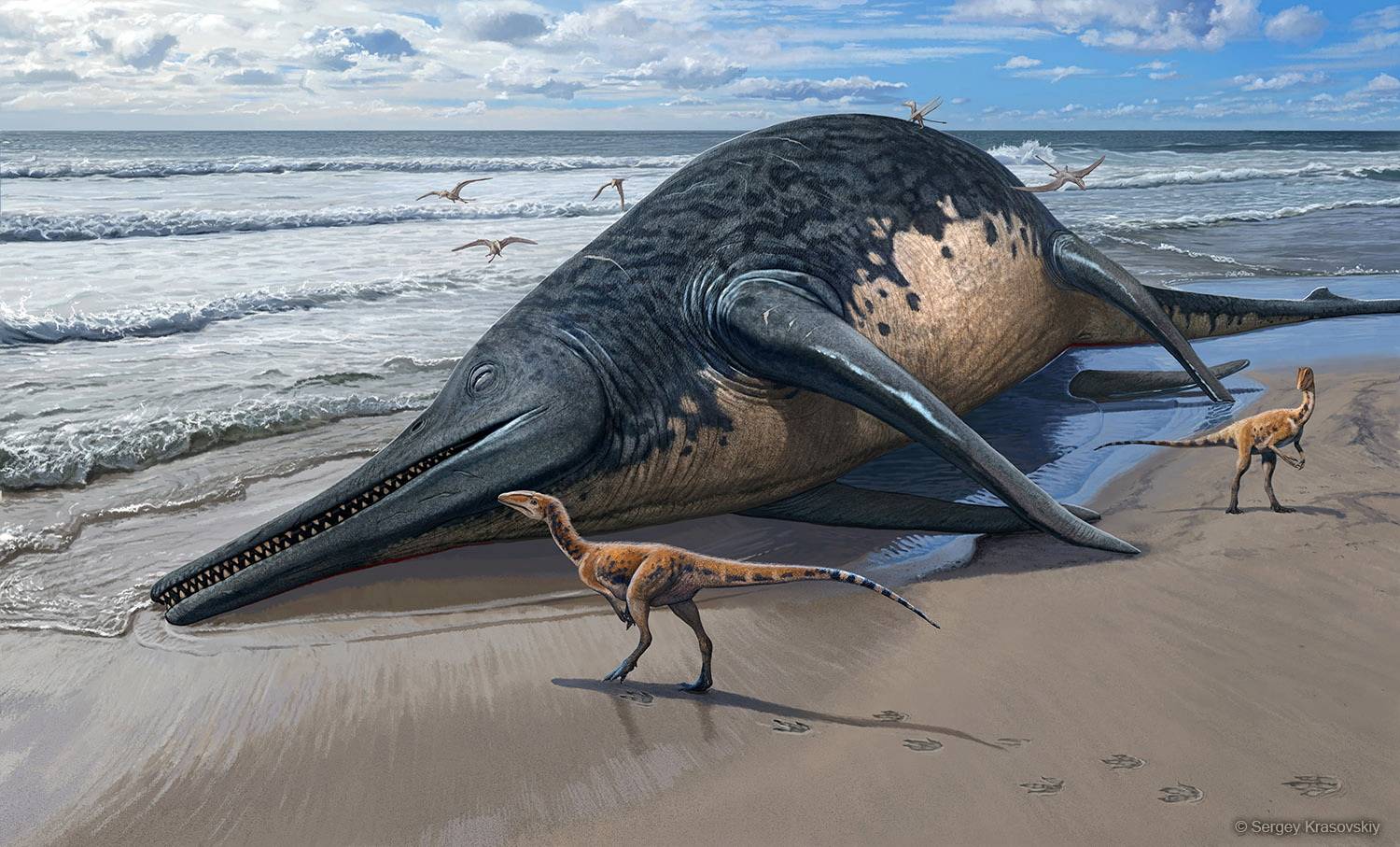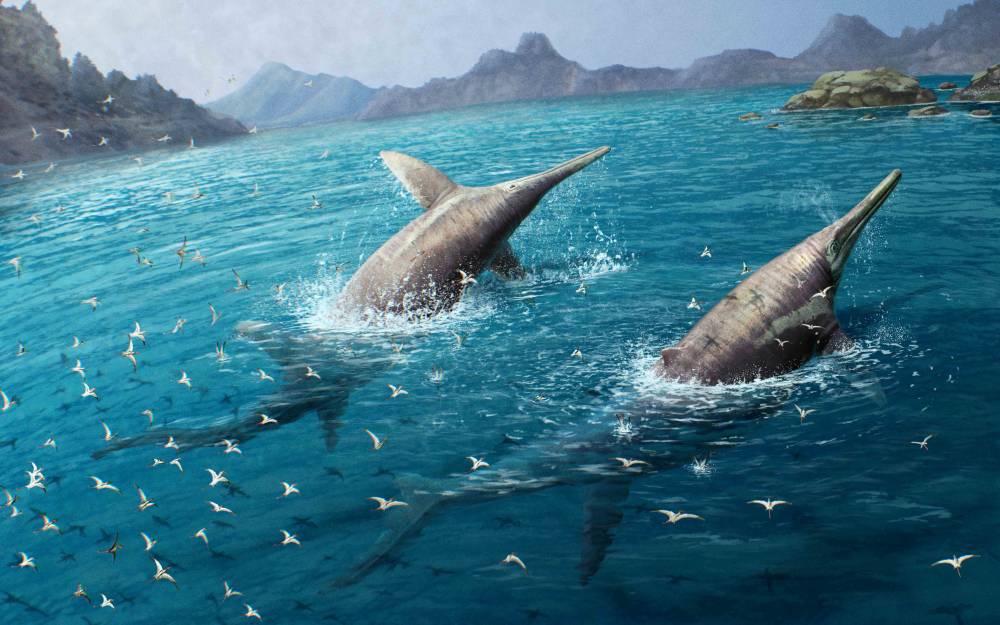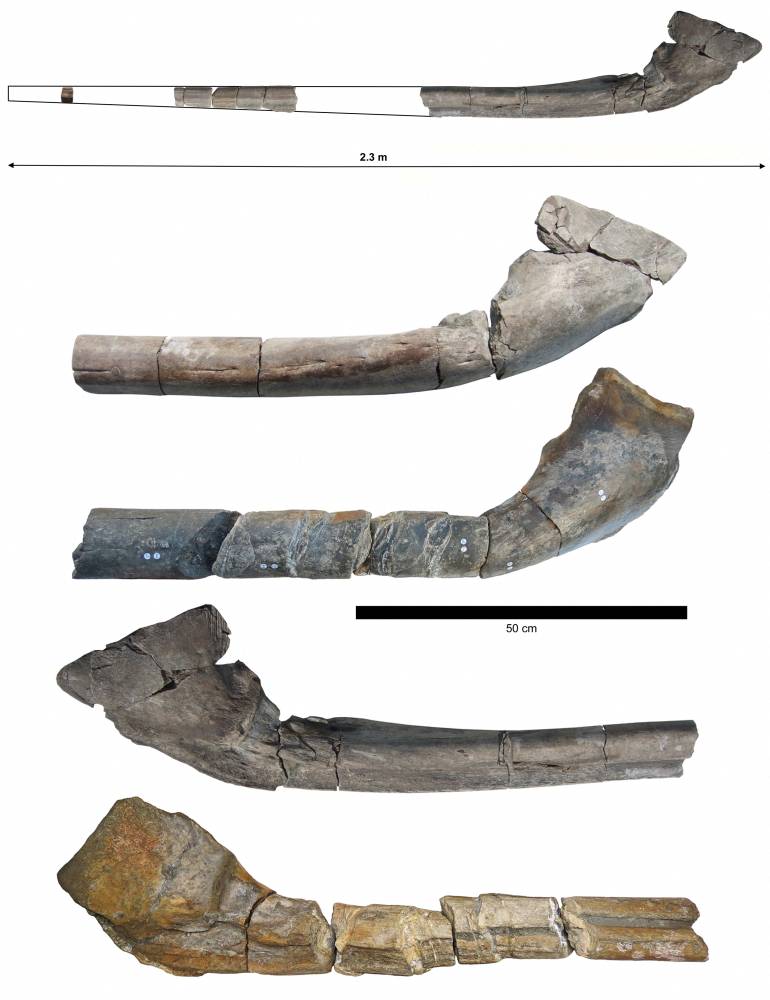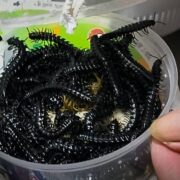British girl’s find on UK beach: Jawbone of ancient reptile

A fossil jawbone found by a British girl and her father on a beach in Somerset, England, belongs to a gigantic marine reptile dating to 202 million years ago that appears to have been among the largest animals ever on Earth.
Researchers said on Wednesday the bone, called a surangular, was from a type of ocean-going reptile called an ichthyosaur. Based on its dimensions compared to the same bone in closely related ichthyosaurs, the researchers estimated that the Triassic Period creature, which they named Ichthyotitan severnensis, was between 72 and 85 feet (22 and 26 meters) long.
That would make it perhaps the largest-known marine reptile and would rival some of the largest baleen whales alive today. The blue whale, considered the largest animal ever on the planet, can reach about 100 feet (30 meters) long.
Marine reptiles ruled the world’s oceans when dinosaurs dominated the land. Ichthyosaurs, which evolved from terrestrial ancestors and prospered for about 160 million years before disappearing roughly 90 million years ago, came in various sizes and shapes, eating fish, squid relatives and other marine reptiles and giving birth to live young.

Somerset coast
Ichthyotitan is known only from two jawbones, the one found by Ruby Reynolds and her father Justin Reynolds in 2020 at Blue Anchor, Somerset, and another from a different Ichthyotitan individual found in 2016, along the Somerset coast at Lilstock.
“It is quite remarkable to think that gigantic, blue whale-sized ichthyosaurs were swimming in the oceans around the time that dinosaurs were walking on land in what is now the UK during the Triassic Period,” said paleontologist Dean Lomax, affiliated with the University of Manchester and University of Bristol, lead author of the study published in the journal Plos One.
Ruby Reynolds, who was 11 at the time and is now 15, was fossil hunting on the beach with her father when they spotted a piece of the surangular. Ruby continued to search the area and found a second piece—much larger than the first—partly buried in a mud slope. They subsequently contacted Lomax, an ichthyosaur expert, and additional sections of the bone were unearthed.
The role of Ruby Reynolds in the discovery has led to comparisons with Mary Anning, the 19th century British fossil hunter and anatomist who, among other things, discovered ichthyosaur fossils when she was 12.

“I think Mary Anning was an incredible paleontologist and it’s amazing to be compared to her,” Ruby Reynolds said.
“It has been an amazing, enlightening and fun experience to work with these experts, and we are proud to be part of the team and coauthors of a scientific paper which names a new species and genus,” Justin Reynolds added.
Awe-inspiring
Fossil collector Paul de la Salle found the 2016 remains now attributed to Ichthyotitan.
Ichthyotitan’s sheer size was awe-inspiring.
“Discoveries like this create incredible moments where we become humbled at our size and place in the world. To learn that an animal of this magnitude once swam our oceans, felt the same warmth of the sun, and breathed our air, and then vanished gives us an opportunity to see how important each species is to the fragile-yet-resilient fabric of life,” Florida-based paleontologist and study coauthor Jimmy Waldron said.
Ichthyotitan was a member of a family of giant ichthyosaurs called shastasauridae, and lived 13 million years later than any of the others known to date, suggesting these behemoths survived until a global mass extinction event that doomed numerous types of animals about 201 million years ago at the end of the Triassic.

No fossils of the rest of Ichthyotitan’s skeleton have been discovered, but the researchers have been able to discern its appearance based on other members of its family including Shonisaurus from British Columbia, Canada.
The surangular is a long, curved bone at the top of the lower jaw, just behind the teeth, present in nearly every vertebrate living or extinct, apart from mammals. Muscles attached to this bone generate bite force.
“In T. rex, the surangular measures over half a meter (1-1/2 feet) in length. The surangular Ruby and her father found stretched more than 2 meters (7 feet). This translates to not only the scope of how truly enormous the animal was, but gives us an indication that it had a lot of boost behind its bite,” said Waldron, who founded the Dinosaurs Will Always Be Awesome mobile dinosaur museum.
Reuters, the news and media division of Thomson Reuters, is the world’s largest multimedia news provider, reaching billions of people worldwide every day. Reuters provides business, financial, national and international news to professionals via desktop terminals, the world's media organizations, industry events and directly to consumers.




















